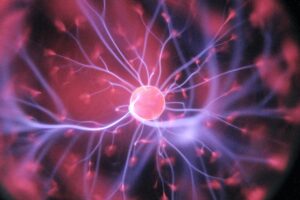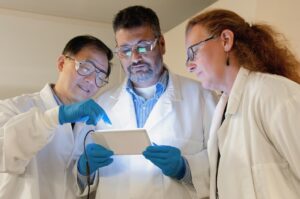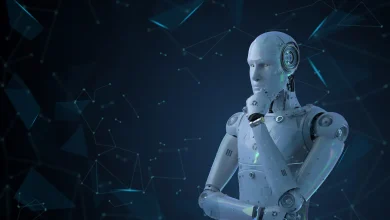Scientists Discover Superconducting Material That Will Change The World
Scientists always try to bring advancements that lead toward sustainability. Recently, they have discovered a new superconducting material, “Redmatter,” which is expected to revolutionize the entire world as it can transmit electricity without any resistance.
With the creation of this breakthrough technology, scientists have finally overcome the primary challenge of power loss occurring due to resistance in power grids. Moreover, “Reddmatter” has massive potential implications for designing high-speed trains and advanced medical equipment.
Superconductors Functioning at Room Temperature – A Distant Dream Comes True?
For over a century, scientists have been trying their best to create materials capable enough of transporting electric current through them with zero resistance.
In theory, superconductors provide an electrical pathway without obstruction or bias. However, technically there was no practical application until today because all such materials fail when exposed to room temperature.
During the year 1986, high-temperature copper oxides proved successful in demonstrating conducting capability close to zero degrees Celsius (-270C). However, given the trouble associated with cooling systems up to -26 degrees Celsius (-2630C), specific industrial applications became more accessible than commercial use.
After inventing copper oxides for building effective coolers and joining this with other ferrous materials able to become effective conductors during low ambient temperatures (for instance, niobium-titanium), another production of increasingly competitive manufacturing processes happened several years ago.
Improvements in Superconductor Scienceability and Utility
The highlight discovery came after extensive research conducted by Professor Ranga Dias’ team; “this time around,” taking extra steps to avoid repeating previous criticism whilst discovering similar superconducts again in July 2021 for laboratories worldwide evaluation, including Nature-released academic papers recording doubly good results achieved using Nitrogen-doped Lutetium Hydride purity percentages control measures.
The synthesis of “Reddmatter,” the superconducting material, was made by combining lutetium hydride with nitrogen and hydrogen before subjecting it to high temperatures for two or three days.
Under high-pressure conditions during production, “Reddmatter” showed remarkable efficiency in transmitting electric current without any resistance, thereby efficiently managing quantum information transport.
Reddmatter” attained its name because of the surprising “bright red color” that unexpectedly displayed after reacting with nitrogen when heated from -269 C to two meters inner depth for 138 gigapascals (GPa) pressure range testing efficacy.
Furthermore, heating up at 20.5 degrees Celsius isn’t that challenging compared to representing similar products’ procedures requiring devices working close to absolute zero (-2730C).
Applications of Superconducting Material “Reddmatter” 
Superconductive materials are revolutionizing the way we store, conduct and generate electricity today.
While conventional ways use copper or aluminum wires to transmit power, superconductive wires show no resistance that potentially creates a loss of power.
With its ability to seamlessly transmit electricity without any resistance, it has vast potential in several industries for creating more sustainable solutions.
In this section, we will discuss the potential applications of a recently discovered superconducting material, “Reddmatter,” in detail through proper subheadings.
Power Transmission
One of the most significant application areas for “Reddmatter” is high-voltage transmission lines where Electrical energy travels from its source.
Step-up transformers elevate voltage levels then current is transported by overhanging hanging cables crossing states before being distributed via electromagnetically generated waves responsible for fueling our motors’ appliances and electronic devices dwelling in our everyday lives.
Power loss due to resistance during transmission causes energy wastage and increased costs.
However, with “Reddmatter,” power could be transmitted at a higher volume allowing extensive reach with reduced losses when grid sections start insulated cables installation making it an eco-friendly option globally affordable as new renewable energies come online, replacing standardized archaic infrastructures while improving conservation measures promoting sustainability consciousness towards low-carbon communities worldwide.
Nuclear Fusion
Nuclear fusion is a clean and sustainable alternative energy source that offers many advantages over traditional methods. Using hydrogen fusion, a natural occurrence that takes place within stars, we can generate unlimited energy without emitting harmful pollutants or wasting precious resources like fossil fuels.
Harnessing the power of nuclear fusion involves harnessing billions of years of burning temperatures that reach millions of Kelvin and the gravitational pressure that squeezes atoms together, producing gamma radiation and electromagnetic spectrum emission signatures. The result is energy that is similar in temperature to what Earth uses during daylight hours, reaching an astonishing -6500 Celsius!
Compared to traditional nuclear reactors, nuclear fusion reactions yield significantly more energy without the associated risks of radioactive isotope leakage. 
This technique can prolong the lifetime of power plants and reduce the costs associated with maintenance while minimizing waste by converting it into harmless substances such as helium. Ultimately, nuclear fusion has the potential to power homes, buildings, and factories with a virtually endless supply of clean, sustainable energy.
One challenge for nuclear fusion is the extreme environmental conditions required to achieve it, which was previously unattainable due to insufficient superconducting materials capable of functioning at such precise requirements until recently discovered “Reddmatter” comes with the ability to facilitate economic advancement in this field.
Consumer Electronics
Superconductive material incorporation into everyday consumer electronics has vast potential for appliance and device efficiency development present, from mobile devices, laptops, refrigerators, gaming, and entertainment console appliances to large data centers.
As well, having reduced power consumption reduces carbon dioxide emittance significantly on individual monthly costs, reducing our ecological footprint influences change regarding public adoption of Smart city dreams.
Moreover, it will also help with catalyzing a smarter circular economy acting as an enabler rather than an inhibitor where recyclability lifecycle design concepts flourish in practice supporting natural environment wellbeing structures.
Transportation
Transportation consumes massive amounts of energy, contributing significantly to global pollution levels. 
High-speed trains require substantial support from high-voltage overhead wires or transit power tapped away from tracks through third rails.
It is where substation transformers supply electricity regardless of track failures above tracks, powered by liquid nitrogen at -200C temperature can create smooth, quick, and lightweight trains, reducing air travel or decreasing maintenance (segregation), which are practical solutions massively in need these days.
Moreover, with the use of superconductor technology, electric cars, and buses could travel greater distances between recharges. The energy transfer would also be faster due to less resistance in wires.
Furthermore, superconductive flywheels are used on trams instead of resistive brakes as the wheel’s kinetic energy is stored temporarily where it flows from regaining momentum.
It is when efficient electromagnetic interlocking systems during stops through low-voltage electricity pulse stimulation process, significantly increasing sustainability with lower carbon footprints than previously available alternatives.
Medical Equipment
One of the most promising areas where superconductors have shown potential is medical imaging machines.
For instance, magnetic resonance imaging (MRI) scans enable doctors’ diagnostic images of a patient’s internal organs without exposing them to potentially harmful radiation experienced using X-ray or CT scan methods.
Traditionally coil systems within MRI machines’ constant cooling requirements become efficient when utilizing “Reddmatter”-like materials allowing operational reduction costs and improved image quality detection accuracy.
It will be helping patients receive precise treatments highlighting systemic disease/ailments forecasted clinical outcomes bringing about advances made towards enhancing the ability to provide humanity optimum healthcare delivery via social inclusion opportunities, drastically reducing global health inequities’ gap.
Future Horizons
The discovery of “Reddmatter” offers great hope for a more sustainable world. Here are some future horizons:
Commercial Production
Mass production techniques will allow for large-scale commercial operations of “Reddmatter.” This superconductor will reduce the cost and increase capacity when transmitting electricity across long distances, making it an ideal alternative for copper cable installations.
Renewable Energies
By incorporating “Reddmatter” into renewable energy systems, they would operate more efficiently and at reduced costs to recipients.
This technological breakthrough provides effective solutions to locals living on limited budgets who commonly lack basic services like adequate infrastructure access due to practices resulting from fragile ecosystems’ endangerment causing unprecedented changes in climate-threatening livelihoods worldwide.
Scientific Discovery
The discovery of “Reddmatter” opens up avenues for further research in superconductivity. Scientists hope to attain room-temperature superconductors one day, which could have practical industrial applications. This discovery inspires future generations to pursue science education and contribute towards shaping a better society.
“Reddmatter” is significant because it can help to preserve the heritage and protect natural rhythm in delicate ecosystems or protected regions. Its discovery encourages a science-driven approach that aligns with environmental concerns, promoting socially responsible business practices across various industries and borders.
This commitment towards sustainability reflects the United Nations’ 2030 Sustainability Development Goals (SDGs), driving progress towards a green sector and achieving significant success across diverse communities worldwide.
In addition, the discovery of “Reddmatter” not only impacts scientific research and industry but also has socio-economic implications. It could offer economic stability and promote job creation by expanding various industries through innovative technologies.
Furthermore, sustainable renewable energy made possible by superconductive materials like “Reddmatter” could reduce dependence on non-renewable resources while promoting collective efforts towards reducing carbon footprints and sustaining a cleaner, healthier planet for future generations.
Conclusion
The discovery of “Reddmatter” marks a momentous stage in human development, bringing us one step closer to an eco-friendly and sustainable world. Incorporating this superconductor into different industries will make them operate more efficiently and reduce energy costs substantially.
Furthermore, research into superconductivity will accelerate with “Reddmatter’s” production becoming commercially viable, inspiring global educational interest toward science-driven approaches aligned with environmental concerns.
It will lead to emergent technologies changing how humanity interacts with nature for holistically preserving resources on our planet Earth’s motherland status.
Thereby creating prosperous, equitable resilient futures through respectful work harmoniously combined cultural heritage respecting universal values among all people.
The possibilities are vast in fields ranging from energy production to transportation and beyond, indicating that this breakthrough will have a profound impact for decades to come.





